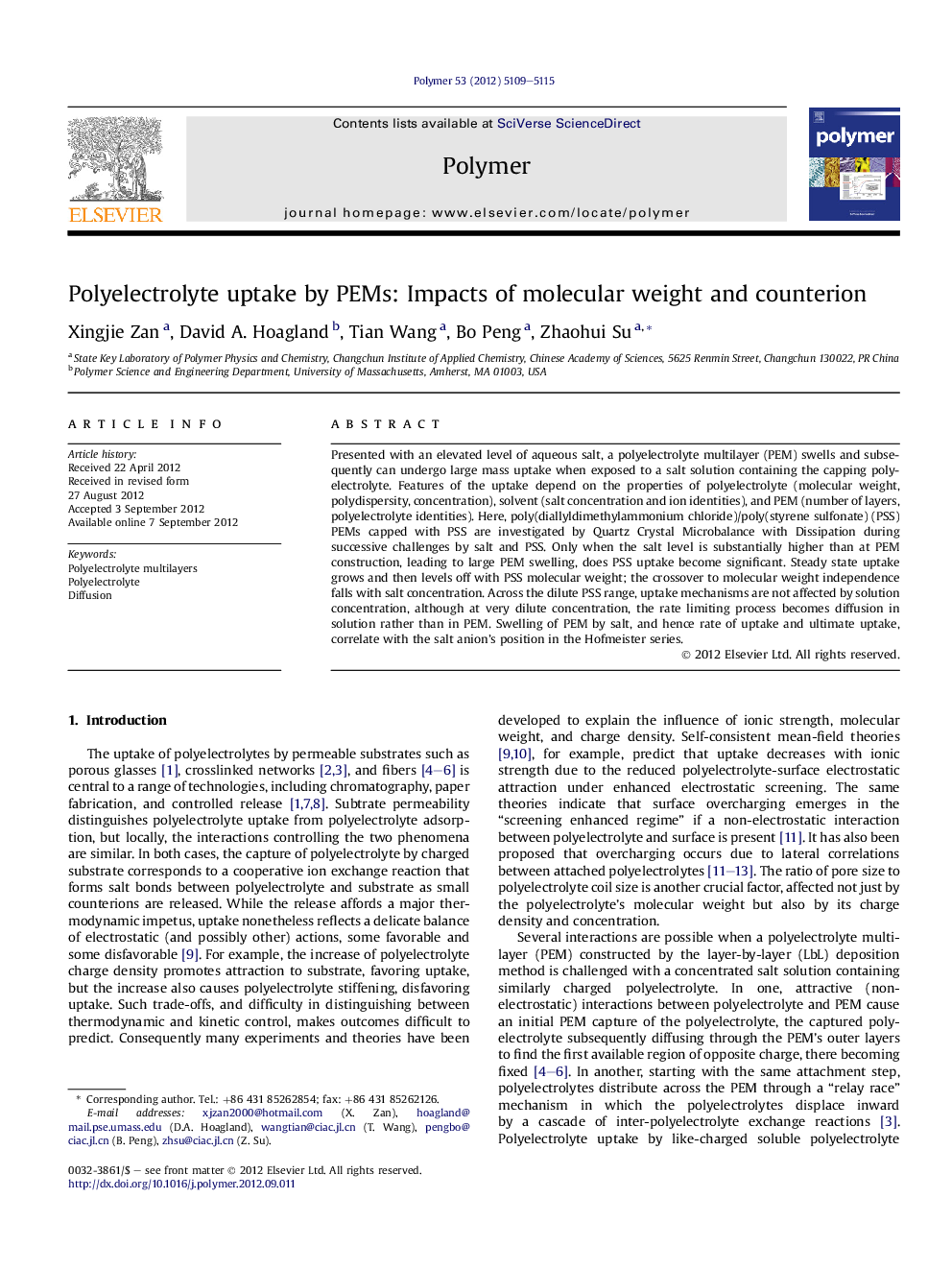| Article ID | Journal | Published Year | Pages | File Type |
|---|---|---|---|---|
| 5183273 | Polymer | 2012 | 7 Pages |
Presented with an elevated level of aqueous salt, a polyelectrolyte multilayer (PEM) swells and subsequently can undergo large mass uptake when exposed to a salt solution containing the capping polyelectrolyte. Features of the uptake depend on the properties of polyelectrolyte (molecular weight, polydispersity, concentration), solvent (salt concentration and ion identities), and PEM (number of layers, polyelectrolyte identities). Here, poly(diallyldimethylammonium chloride)/poly(styrene sulfonate) (PSS) PEMs capped with PSS are investigated by Quartz Crystal Microbalance with Dissipation during successive challenges by salt and PSS. Only when the salt level is substantially higher than at PEM construction, leading to large PEM swelling, does PSS uptake become significant. Steady state uptake grows and then levels off with PSS molecular weight; the crossover to molecular weight independence falls with salt concentration. Across the dilute PSS range, uptake mechanisms are not affected by solution concentration, although at very dilute concentration, the rate limiting process becomes diffusion in solution rather than in PEM. Swelling of PEM by salt, and hence rate of uptake and ultimate uptake, correlate with the salt anion's position in the Hofmeister series.
Graphical abstractDownload full-size image
